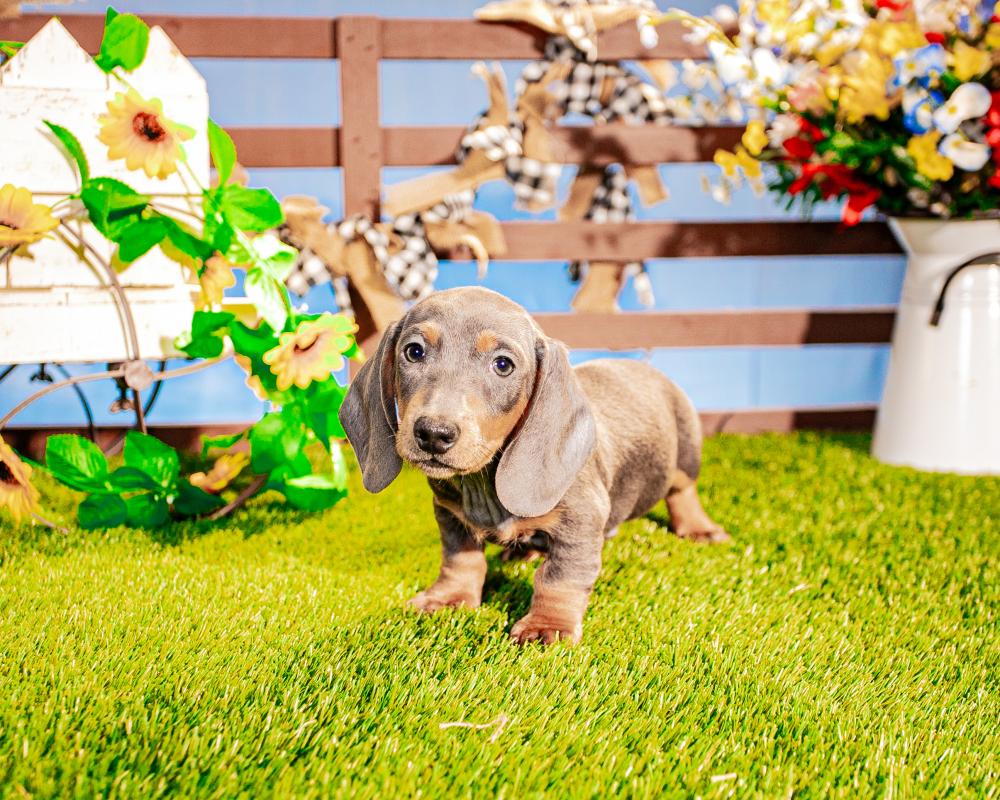Get To Know The Unique And Popular Dachshund
With their long, low body, floppy ears and friendly personality, it’s no wonder the Dachshund has become one of the most popular breeds according to AKC registration statistics. The name Dachshund translates to "badger dog", which gives a clue to its original purpose when it was first bred in Germany. Today, these lively little dogs are eager hunters and loving family dogs. The breed includes three different coat varieties, Smooth, Wirehaired and Longhaired and comes in standard or miniature size.
History
Looking for a fearless dog that could easily fit into the tight space of underground badger burrows and be fierce enough to battle the vicious badgers to the death, Germans in the 1600s began breeding Dachshunds. Their short legs and long, narrow bodies were the perfect size to allow them to access the burrows and their keen hunting instinct made them very successful at defeating their badger foes.
In the early 1900s, the breed gained popularity across the Atlantic in the U.S. but their popularity waned during World War I. U.S. breeders began to slowly build the gene pool back up after the war using German stock and soon it was back in favor and has remained one of the most popular breeds to this day.
Temperament
The Dachshund is part of the hound group and was first recognized by the AKC in 1885. They come in two sizes: Standard, which ranges from 16-32 pounds and Miniature, which weigh 11 pounds or less. They have a lovable, playful personality that makes them a perfect fit for many families but the fierce hunting instinct that is part of their natural temperament means that some supervision may be necessary in families with children. They are fairly adaptable to most environments and require moderate exercise, making them good companion dogs. In fact, Dachshunds are known as people pleasers, eager to keep everyone happy and are very loyal to their family. It’s not unusual for Dachshunds and their owners to form a deep, loving bond. Unfortunately, that good nature doesn’t always translate to strangers. Dachshunds are known to be biters so some training will be necessary to prevent issues.
Environment
The ideal environment for a Dachshund is a cozy and loving home where they can feel secure. While small in size, Dachshunds are active dogs and need space to play, both indoors and outdoors. They thrive in homes with access to a yard or regular walks for exercise. Due to their hunting instincts, it’s important to provide mental stimulation through toys and activities. Dachshunds also enjoy spending time with their family and prefer environments where they are not left alone for extended periods.
Exercise
The ideal exercise regimen for a Dachshund should include daily walks and moderate playtime to keep them physically and mentally stimulated. Despite their small size, Dachshunds are energetic and benefit from at least 30 minutes of activity each day. Due to their long backs, it’s important to avoid exercises that involve excessive jumping or strenuous activity that could strain their spine. Games like fetch, gentle climbing, and interactive toys are great ways to keep them active while protecting their unique body structure. Regular exercise helps prevent obesity and promotes overall health.
Grooming
While Dachshunds are considered one of the lowest maintenance breeds, grooming will vary depending on the length of the coat. Smooth Dachshunds can usually be groomed with a soft brush once or twice a week while Longhaired Dachshunds require daily brushing, especially around the ears and legs, and may require hair trimming around the ears and feet as well. Wirehaired Dachshunds need to be brushed and bathed and the beard area under the chin should get particular attention. In general, Dachshunds do not shed a lot but Wirehaired Dachshunds in particular have very little shedding and are considered very good pets for individuals with allergies.
